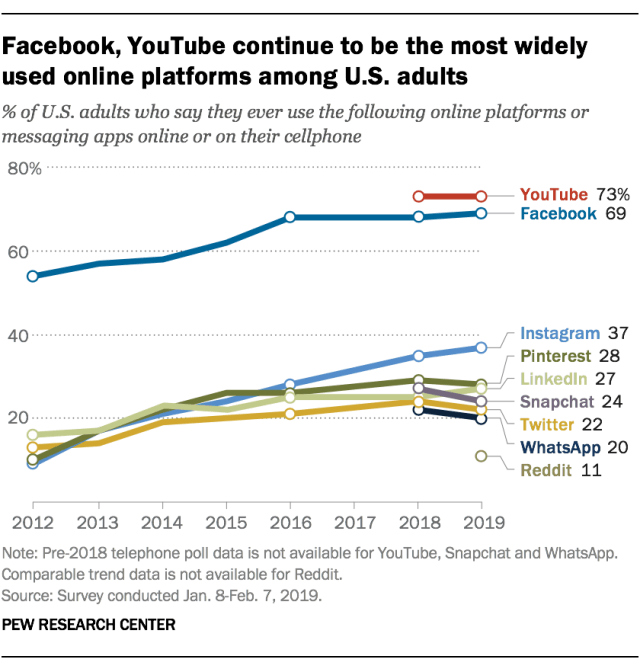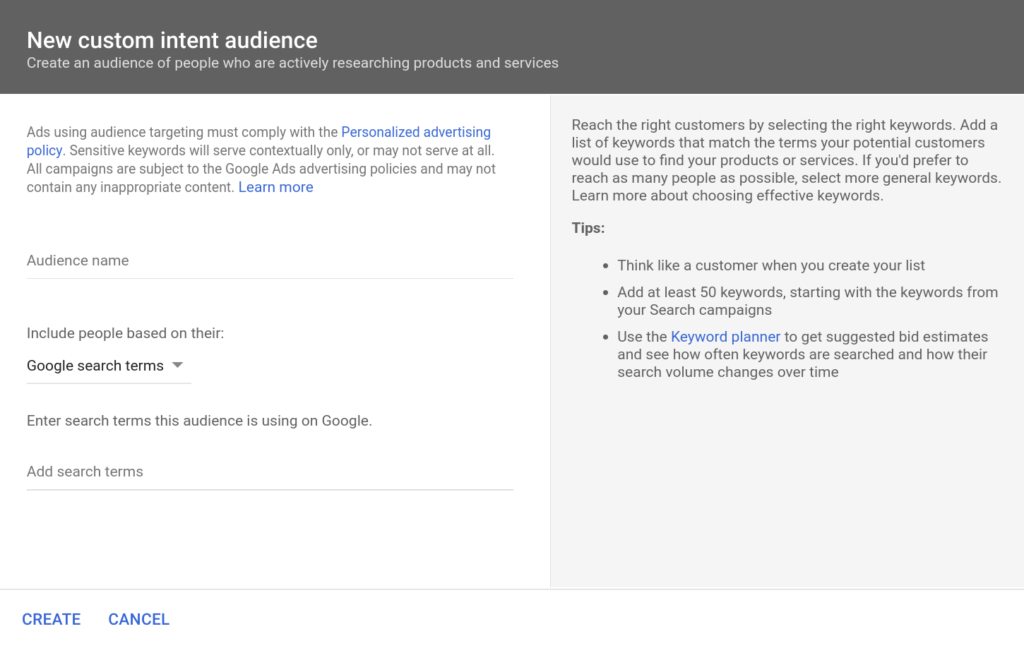In the Google Ads audience manager, a well hidden audience definition feature is custom audiences. With this tool you can define & populate custom audiences based on users’ custom affinity or custom intent. Custom intent audiences are our focus, and specifically the option to add users to an audience based on keywords they searched on Google.com. With custom affinity, and seemingly with the other custom intent option for “in-market” keywords – Google is inferring which users to add to an audience, whereas users’ literal Google search history allows for deterministic certainty in identifying users.
High value YouTube video ad & RLSA use case

Create a custom intent audience based on user Google search terms. Use this audience to target with YouTube video campaigns, excluding users that have visited your website (i.e., net new users). These could be users searching for your competitor brand names – any keywords that would be searched by your prospective customers that are not specifically related to your business products & services (otherwise you would just target searches related to your business with a standard search campaign).
Create a YouTube based remarketing audience that adds users that view ads presented to your custom intent audience.

Use this YouTube based audience to target with search campaigns (RLSA). Users on this YouTube based audience were searching on Google.com already for keywords you feel are very likely to be searched by users that would also be interested in your business / products & services. And, you have planted a seed with these users by showing them your video ad. Given that you can “target and bid” with this YouTube based audience, you can have confidence to be aggressive with broad match keywords (related to your business) that would otherwise be potentially wasteful, allowing for a prospecting advantage that can make a difference for your business.

An example: if you sell pocket protectors (standard nerd gear), and your customers often search about “Dungeons & Dragons” – build a custom intent audience based on users that searched Google.com with “Dungeons & Dragons” related search terms. You could always author content on your website about “Dungeons & Dragons” for use with related standard search campaigns, but that’s not nearly as “nerdy fun” as this tactic. And more importantly, this tactic gives you freedom to prospect relative to weird search term associations for your prospects where adding related content to your website does not make sense.
Note that you can not build YouTube remarketing audiences from video bumper ads. You must use skippable in-stream video ads.
Attribution benefits of YouTube video ads
Recent YouTube usage stats tells us that 73% of US adults use YouTube. It was the most-downloaded iOS mobile app in 2018, and as of December 2018, YouTube was installed on 5 billion Android devices. A total of 70% of YouTube watch time comes from mobile devices, according to self-reported YouTube data.
This matters because YouTube video ads, especially those served on a mobile device, allow for incredibly powerful attribution – at a time when attribution is under attack with efforts like ITP. Users are logged into the YouTube app on their mobile devices when they view video ads. Google knows who sees those ads and when. When those users later engage in conversions on your digital property, especially a property with user activity recorded in Google Analytics where Google Signals is engaged, Google knows what video ads impacted those conversions and can report that attribution accordingly.

Create a Google search terms based custom intent audience
- Browse to the Google Ads Audience Manager.
- Click “Custom Audiences” at the top of the page.
- Click the blue + to add a “Custom Intent” audience.
- Add an audience name.
- In the “Include people based on their” option select “Google search terms” (“In-market keywords” is the default option).
- Add search terms per the instructions to the right, which read:
- Think like a customer when you create your list.
- Add at least 50 keywords, starting with the keywords from your Search campaigns.
- Use the Keyword planner to get suggested bid estimates and see how often keywords are searched and how their search volume changes over time.
- Click “CREATE”.
